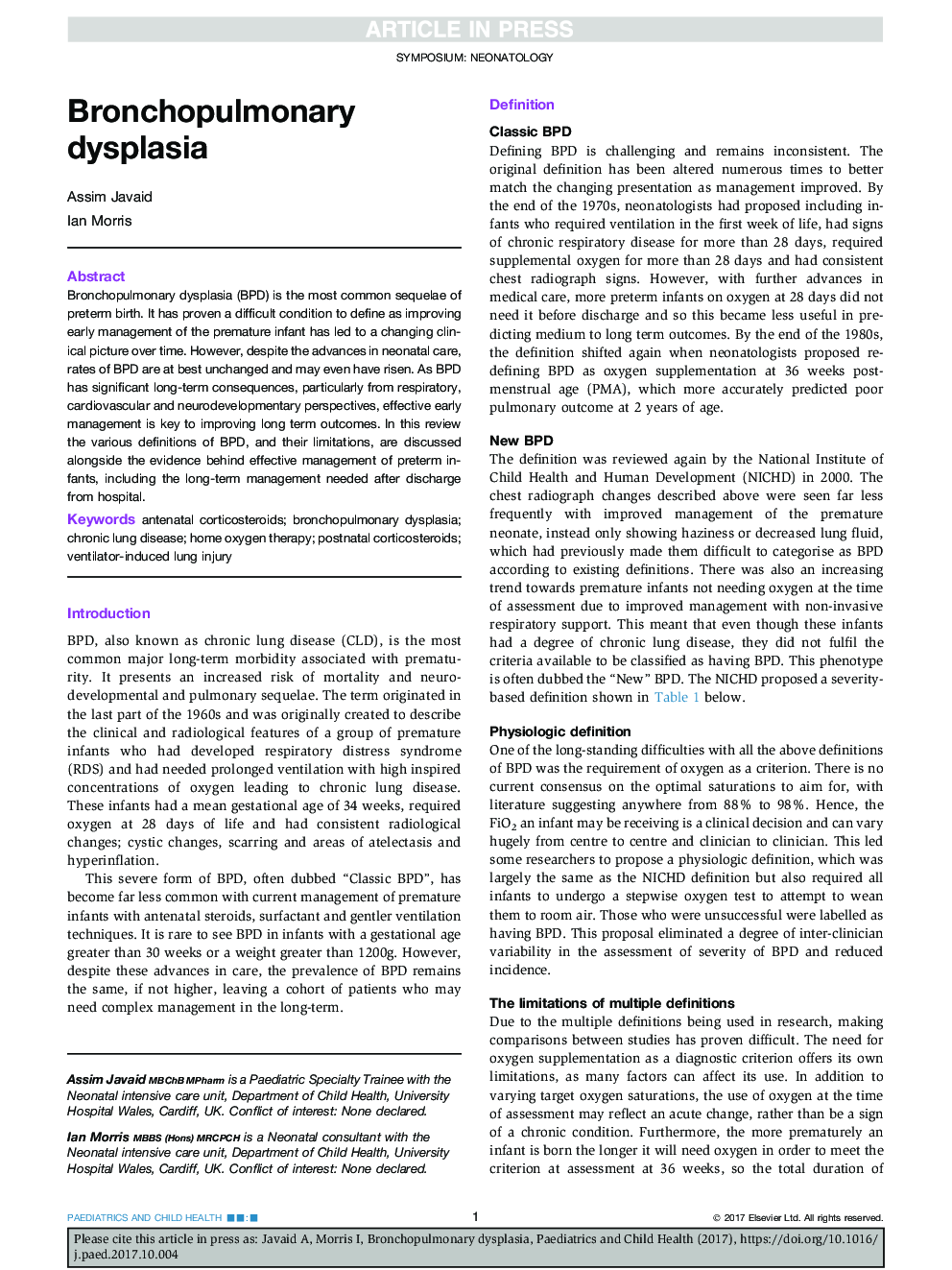| Article ID | Journal | Published Year | Pages | File Type |
|---|---|---|---|---|
| 8813142 | Paediatrics and Child Health | 2018 | 6 Pages |
Abstract
Bronchopulmonary dysplasia (BPD) is the most common sequelae of preterm birth. It has proven a difficult condition to define as improving early management of the premature infant has led to a changing clinical picture over time. However, despite the advances in neonatal care, rates of BPD are at best unchanged and may even have risen. As BPD has significant long-term consequences, particularly from respiratory, cardiovascular and neurodevelopmentary perspectives, effective early management is key to improving long term outcomes. In this review the various definitions of BPD, and their limitations, are discussed alongside the evidence behind effective management of preterm infants, including the long-term management needed after discharge from hospital.
Keywords
Related Topics
Health Sciences
Medicine and Dentistry
Perinatology, Pediatrics and Child Health
Authors
Assim Javaid, Ian Morris,
